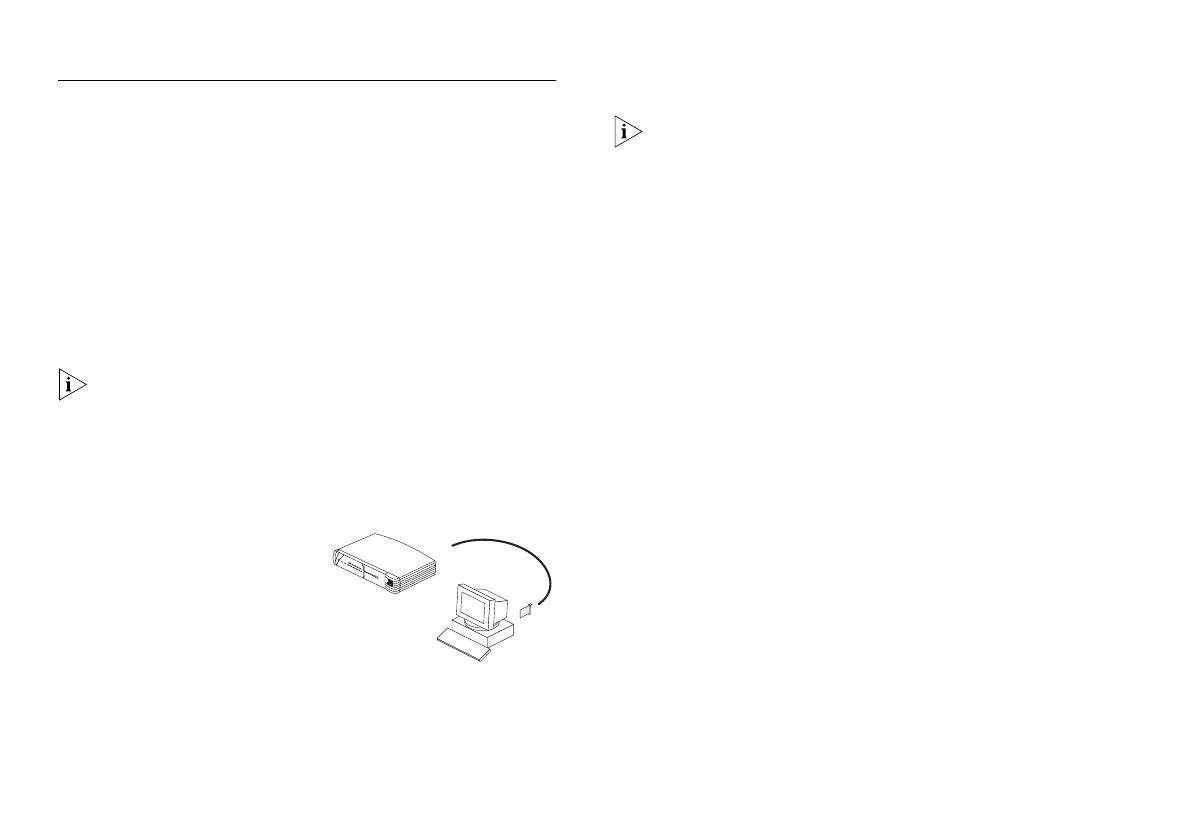
8
Before You Start
Your OfficeConnect hub comes with:
■
One power adapter for use with the OfficeConnect hub.
■
A Product Registration card for you to fill out and return.
■
Four rubber feet.
■
A stacking clip.
■
Two unit labels and eight cable ties.
■
An OfficeConnect Network Assistant CD-ROM.
The extra parts mentioned in the next section are not
supplied with the hub.
Workstation Connections
To connect workstations or other equipment to your hub,
you need:
1
One 10BASE-T,
10/100BASE-TX, or
100BASE-TX adapter card
for each workstation. 3Com
produce a range of
easy-to-install network
adapter cards, which
provide your workstations with a suitable connection.
2
An operating system (for example, Netware or Windows
95/98) with network support configured, running on
your workstations.
3
One suitable TP cable for each workstation.
In order to comply with the 10BASE-T standard, ports
designed for workstation connections have been
marked with the graphical symbol ‘x’. This denotes a
crossover in the port’s internal wiring, for example 1x,
2x, 3x...
Twisted Pair (TP) Cables
To connect your workstations and other equipment to the
Hub, use ‘straight-through’ TP cables with RJ-45 connectors
(all OfficeConnect products use RJ-45 type connectors). A
‘straight-through’ cable is one where each pin of one
connector is connected to the same pin of the other
connector. Cables can be shielded (screened) or unshielded;
we recommend that you use shielded cable. Cables used for
100BASE-TX or 10/100BASE-TX connections must be data
grade (Category 5). Your supplier should stock suitable
cables.
The maximum length of a single cable is 100m (328ft).
Refer to “Fast Ethernet (100Mbps) Configuration Rules” on
page 11 for further information on cable lengths in a
100Mbps network.
Hub Connections
To connect other OfficeConnect units to your Hub, you need
one suitable TP cable for each unit.
3
2
1
3C16750_booklet.book Page 8 Tuesday, July 13, 1999 11:18 AM


















